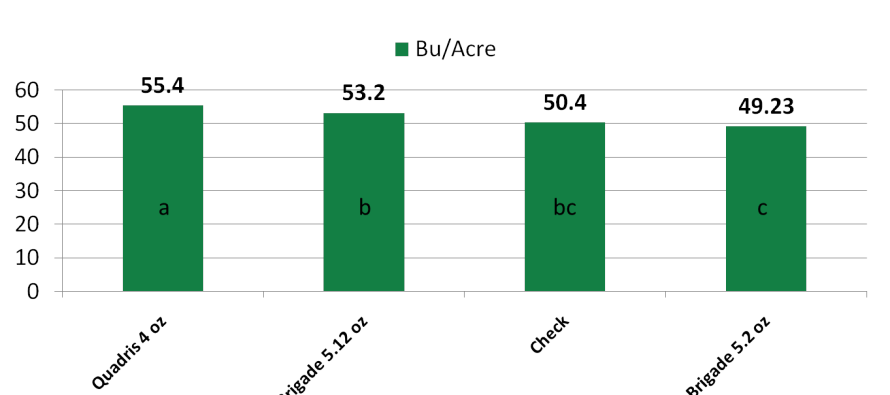Fungicide Time for Soybeans: The Insecticide Add on Dilemma

Many of the soybeans are now reaching R3-R4 growth stage so fungicides are commonly being applied. I have received quite a few calls questioning whether or not to add an insecticide in the tank since a trip was being made across the field. This is not a new question; in fact it comes up every year. I am a huge proponent of saving money, averting risk, and doing what makes sense, even if it’s not popular. However, if you are applying an insecticide “just because†when no insect pest or only very low numbers are present, it makes no sense logically or economically, nor does it save you any applications down the road.
So when I am asked, “Should I add an insecticide in with my fungicide� My standard response is absolutely, if you have a reason. One of the reasons I am sensitive about this topic is because I know without a doubt that low numbers of threecornered alfalfa hoppers or bean leaf beetles and one or two stink bugs is not causing any economic damage at all and the consequence of making a broad spectrum pyrethroid spray is the potential to flare caterpillar pests such as bollworms and loopers. No doubt these can be extremely damaging. Also, residual control with pyrethroid insecticides is roughly 3-5 days max so it won’t save a spray next week if other pests start moving in a field.
What about the diamide chemistries?
Diamides are a fairly new class of chemistries sold as Belt, Prevathon, and Besiege. This is truly the most incredible class of chemistry against caterpillar pests we have seen. Residual is long and control is tight when applied correctly and good coverage is achieved. It is not uncommon to truly get 14 days residual on bollworms and 24 to 28 on loopers. There has also been talk of applying these with the pyrethroid at R3 to “counter†the caterpillar flare. That makes sense right? Fact is it likely would but every day or week it lies out there unneeded that residual clock counts down. For example, if you apply one of the diamides now and bollworms show up 2 weeks later, what have you achieved other two applications now instead of one.
This soybean crop is a very late one. I suspect we are likely going to deal with high numbers of insects later in the year on a large portion of the crop. Let’s not get in a hurry now and blow our insecticide budget before bugs show up.
Below is a study a I conducted a few years ago looking at fungicide/Insecticide combinations. This was a year where insect pests pressure was very low so there was no response from the insecticide either alone or in combination with the fungicide.
Click to Enlarge




